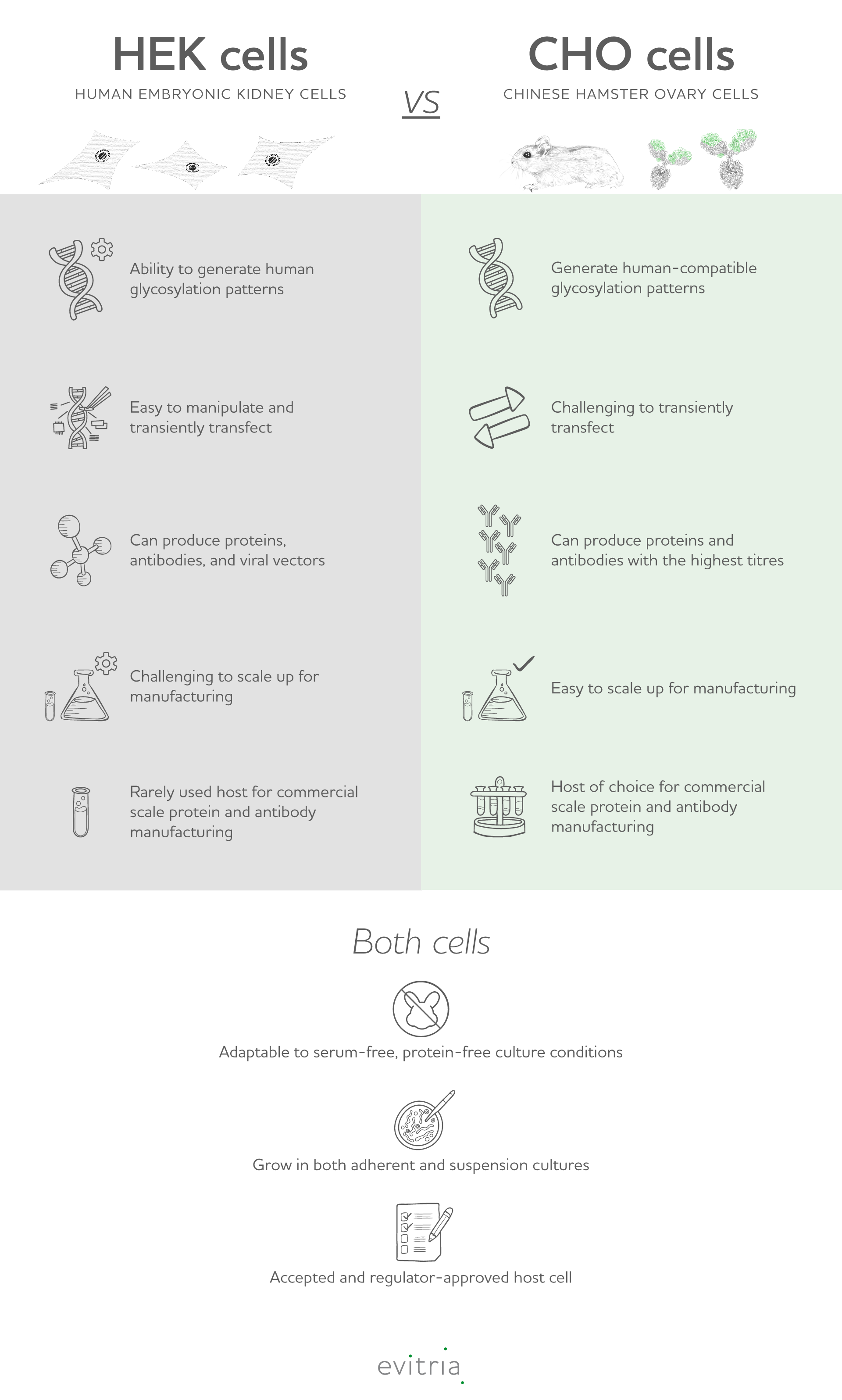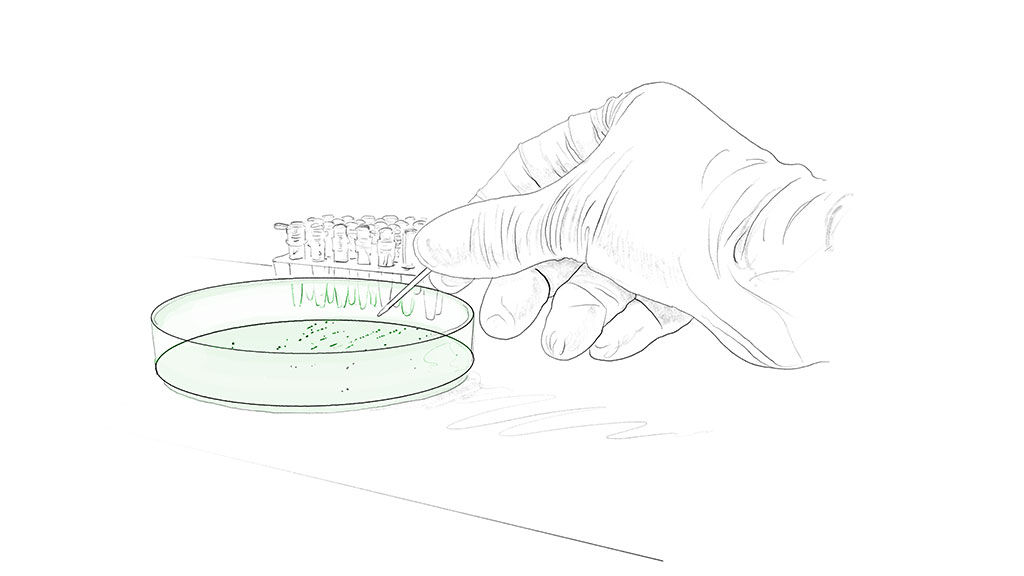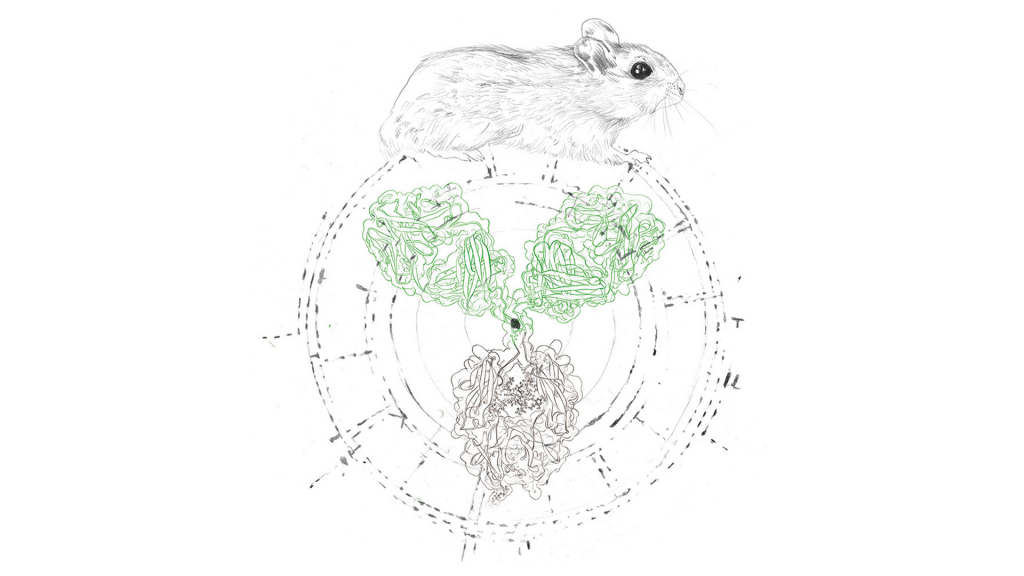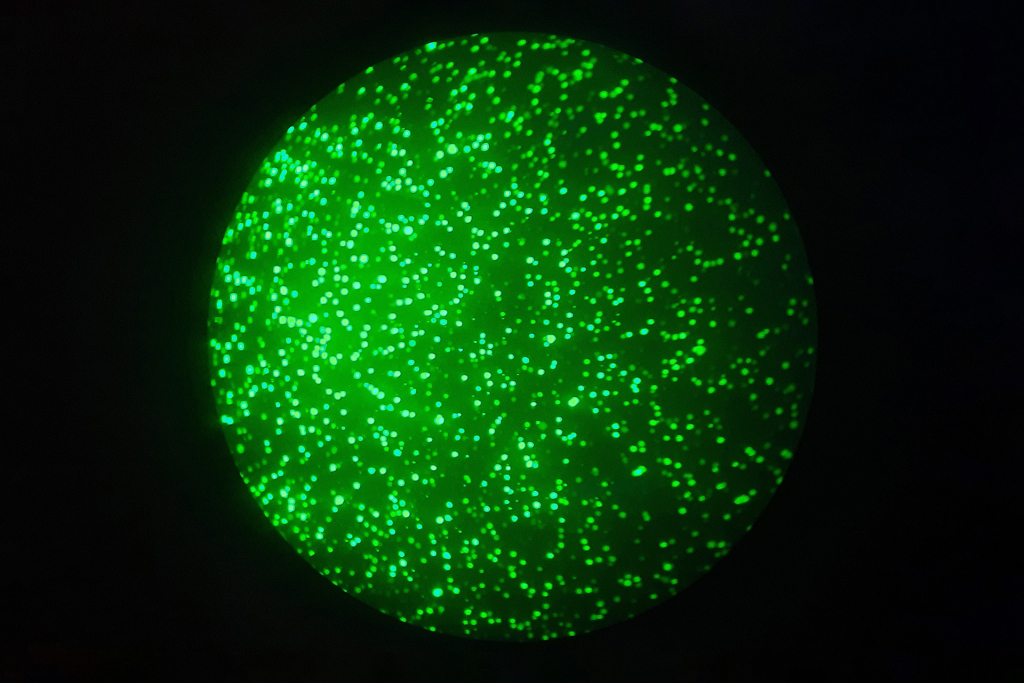HEK293 cells, also known as HEK 293 cells, HEK-293 cells or less precisely as HEK cells, are human embryonic kidney cells which grow in tissue culture and represent a distinct immortalised cell line. Although HEK cells and Chinese hamster ovary cells (CHO cells) are both used to create antibodies and for therapeutic protein production, they differ in many aspects, which will be discussed later in this article.

HEK293 cells, also referred to as HEK-293, HEK cells or simply HEK, stands for human embryonic kidney cells, which are widely known as one of the most important mammalian transient production platforms. But what are HEK293 cells, exactly?
The human embryonic kidney cells were originally a derivative from an aborted fetus and have since been in use in cell biology and biotechnology, thus also for biopharmaceutical purposes. They are considered to have an epithelial morphology, and in terms of proliferation, they can be grown as adherent or suspension, but adherent is the more common choice.
One of the main reasons for the popularity of this cell type is that HEK cells have a high transfection efficiency, feasible for stable and transient transfection with high expression levels. Also noteworthy in the characterization of HEK293 cells is that they are receptive to a wide range of transduction and transfection methods and can be used to create viruses for gene therapies (modification, insertion or deletion of genetic material), plasmid vectors, antibodies, therapeutic proteins and for safety tests of several chemicals.
Subscribe to our Newsletter
Get all the latest updates, and learn about our advancements in antibody production.
Subscribe now
HEK cells were first isolated in 1973 by Alex van der Eb in the Netherlands. Cell cultures of human embryonic kidney cell lines were transfected with sheared adenovirus 5 DNA by Frank Graham. Although the exact cell type is difficult to be determined, there are speculations that HEK293 cells derive from neuronal cells, given similarities to neurons like the presence of specific gene products and mRNA. Due to the two or more chromosome copies they contain, they are considered to have a complex karyotype.
After the extraction, the HEK cells were cultured and the transfection with human adenovirus type 5 began. Cultured over months, the cells supposedly adapted to tissue culture and developed into a rather solid HEK293 line. It was assumed for many years that the HEK cells were generated by transforming fibroblastic, endothelial or epithelial cells. Yet, as the original transformation of the adenovirus was not efficient, it can be suspected that the cell was somehow special.
A study of HEK293’s transcriptomes and genomes showed that the HEK-cell-pattern had the most similarities with adrenal cells. By now, many variants of HEK293 have been found such as HEK293T cells.
Read more about antibody history.
The transfectability of the HEK 293 cell line is the main reason for their widespread usage – together with HeLa cells (originally cancer cells), they are counted among the most frequently used cell lines. HEK cells are easy to transfect and to grow in culture ex vivo (usually in an incubator at 37 °C) and can serve as hosts for experiments in gene expression.
Most commonly, such experiments revolve around transfecting in a gene to assay the expressed protein. This method can be used, for instance, for heterologous expression of cell membrane receptors and ion channels, to study the interaction between two proteins, to research the inducible RNA interference system1, or to find out the effects a drug has on sodium-channels, to name a few.
The use of HEK cells in the propagation of adenoviral vectors (but also in lentiviral vector production) is particularly significant in virology. Due to its lack of key genes and inability to replicate itself after entering a cell, the usage of HEK cells instead of pathogens is safer for the researcher. Consequently, possibly harmful events can be prevented.
There is a variety of HEK-derived cell lines, each differing in some aspects for each other. HEK293T cells, for instance, come with the SV40 large T antigen integrated in their genome. This allows them to produce retrovirus and recombinant proteins in a significantly higher amount.
Other variants of the HEK293 cell line that have been discovered include

CHO cells, also known as Chinese hamster ovary cells are a widely popular cell line in the production of biologics and were originally derived from the ovary of the Chinese hamster, hence the name. Find more information on CHO cells antibody production.
CHO cells are very similar to the human cell system and are therefore the most commonly used cell line derived from a mammalian host in medical and biological research, e.g. in toxicity screening, nutrition studies, genetic studies and gene expression.
One major objective of CHO cells is recombinant protein expression. With the production capacity of 3-10 grams per liter of CHO cell culture, they have an outstanding protein productivity. Additionally, they are known for their long track record, robust growth and hardiness in suspension culture.
Chinese hamster ovary cells are a popular choice in the efficient production of:

CHO mammalian cell lines have, similar to HEK cells, a long history of being used for the production of various reagents, like recombinant protein therapeutics. While CHO cells are the most commonly used cell line, HEK293 cells are also known to be the go-to for many researchers. As the CHO cells stem from the animal called Chinese hamster, the HEK cells are more considerable for some studies because of their human cell line origin.
Yet, HEK293 and CHO cells are not the only possible options. There are also baby hamster kidney cells (BHK), NS0 murine myeloma cells, SP2/0 murine hybridoma cells, HT-1080 human fibrosorcoma cells as well as C127 murine mammary gland cells. Nonetheless, CHO mammalian cell lines in particular, but also HEK cells, are the cell lines of choice when it comes to protein production, as they offer distinct advantages over all of the above. 3
HEK cell lines are known for their high transfectability, but they also have other impressive characteristics:
However, the HEK cell line also has its limitations. In some cases, it is possible that the usage of HEK cells for protein production causes the final product to be contaminated. The production of stable recombinant protein with HEK cells has mostly been achieved by using xenogeneic genes as selection markers. This makes them prone to bacterial and to viral contamination, which could either result in immunogenicity to the product or in adverse and allergic reactions.
CHO cell lines are an extraordinary bioprocess tool and are known to be the gold standard in biologics production because of their unique advantages. Some of those are:
Due to their extensive advantages CHO cells have become the most important cell line for bio research and production. Last but not least, and this may be the most important aspect of all, CHO cells have a very low virus susceptibility. In contrast to HEK cells, the risk of propagation of human viruses is significantly decreased due to their hamster origin. Therefore, production loss is mitigated and biosafety can be increased.

CHO cells are – despite HEK cells having some amazing characteristics – definitely the way to go when it comes to being on the safe side. With their constant progress, improvement, and tremendous advantages, such as large-scale expression in a relatively short time span, CHO cells are the obvious choice. Even more so, considering all of that can be achieved without the threat of losing time and money due to possible contaminations.
It should have become clear by now why we at evitria only focus on CHO cells for antibody production. evitria is the leading provider for recombinant antibody production service in CHO cells and concentrates exclusively on this service. Therefore, maximum quality in a minimum of time can be guaranteed. While keeping an eye on the latest requirements, we guarantee to focus on the customer’s need to meet the particular demands of your antibody production.
HEK, also known as HEK293 cells, is a cell line originating from human kidney cells. HEK cells are frequently used in fundamental biological research, as they are easy to be transfected and cultured.
HEK293 cells were first isolated by Alex van der Eb in 1973.
HEK293 cells have been widely used in fundamental biological research, due to them being easily transfected and cultured in vitro. They are suitable both for stable and transient transfection, each to be performed by the means of various different approaches.
Other fields of application for HEK293 cells are, for instance, the production of recombinant proteins and viral particles, but also safety testing.
HEK293 cells stem from human embryonic kidney cells, first isolated in 1973 by Alex van der Eb. The number “293” following the acronym “HEK”, on the other hand, resulted from the number of experiments he performed.
HEK293 cells originate from a female human fetus.
Human embryonic kidney cells are frequently used due to them being easily transfected and cultured. Additionally, they are feasible both for stable and transient transfection.